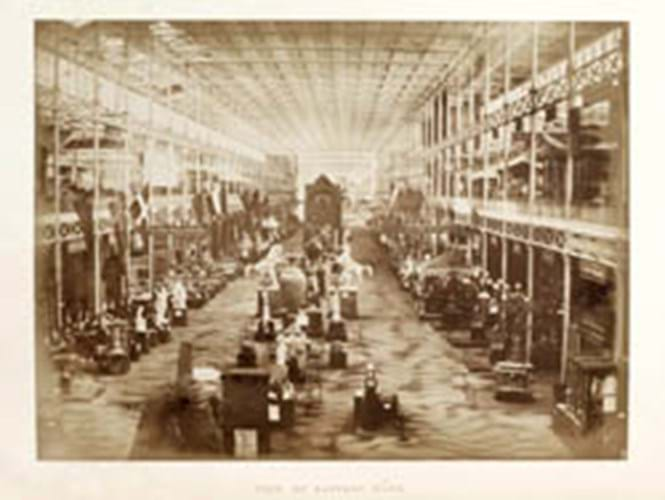
Photographic pioneer W.H. Fox Talbot, inventor of the calotype and the patent holder on the process, was persuaded that in lieu of a straight fee or the option of exercising his patent rights, he should accept 15 copies of the finished work, which the committee valued at the time at £30 each.
In all, 130 copies of the Reports by the Juries on The Subjects in the Thirty Classes into which the Exhibition was Divided were printed for presentation to Queen Victoria, Prince Albert, Cabinet ministers, foreign governments and institutions such as the British Museum - each four volume set containing a total of 154 calotype prints, plus three chromolitho plates.
Using albumenised glass plate negatives and calotype paper negatives produced by Claude Marie Ferrier and Hugh Owen respectively, Nikolaas Henneman, Talbot's one-time photographic assistant, was given the job of printing the 20,000 or so positive prints needed on Talbot's silver chloride paper, but, as Talbot remarked at the time, "[the Committee] are so extraordinarily stingy, notwithstanding they have a surplus of £200,000, and make such hard conditions... that it is doubtful whether he will earn anything by his labour".
The four-volume sets were specially bound in red morocco by Rivière, the title of each volume and the crowned monogram of Victoria and Albert stamped in gilt on the covers and spines, while inside those covers, red morocco turn-ins with gilt Greek key pattern decoration frame blue watered silk endpapers that bear the gilt-stamped Royal insignia between Victoria and Albert monograms.
A very rare copy seen at Bonhams on June 7 was one that Fox Talbot gave to his daughter and is inscribed ...to his dear daughter Matilda 1st January 1860 at the foot of a specially printed and tipped-in presentation leaf.
Sent for auction by a direct descendant, it was modestly valued at £20,000-30,000 by Bonhams, but was finally knocked down at £180,000 plus premium to London bookdealers Folios Ltd.
No complete sets show up in book auction records, but there was one sold at Christie's for £60,000 - though not in that case bearing an inscription from Fox Talbot - and is possible that examples may have found their way into photographic sales as well.





